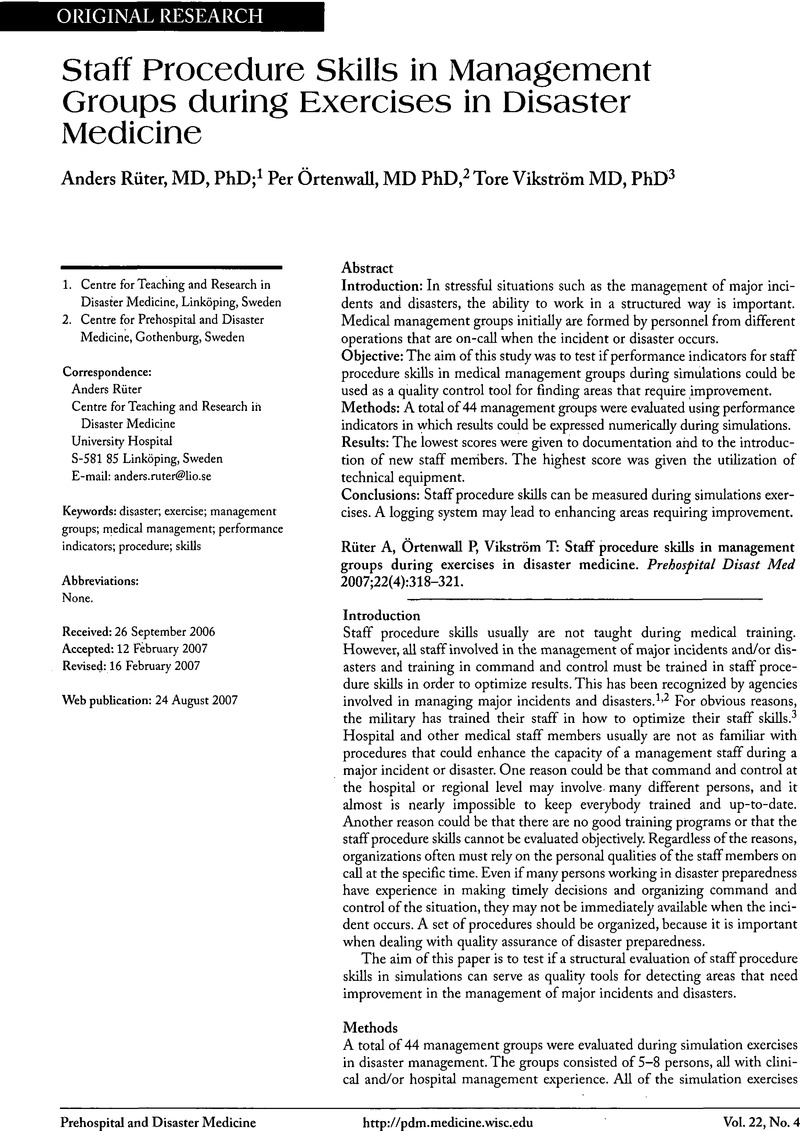Crossref Citations
This article has been cited by the following publications. This list is generated based on data provided by Crossref.
Noble, David
2002.
Rapid Vascular Access Device.
Prehospital and Disaster Medicine,
Vol. 17,
Issue. S2,
p.
S54.
Rüter, Anders
and
Vikstrom, Tore
2009.
Improved Staff Procedure Skills Lead to Improved Management Skills: An Observational Study in an Educational Setting.
Prehospital and Disaster Medicine,
Vol. 24,
Issue. 5,
p.
376.



